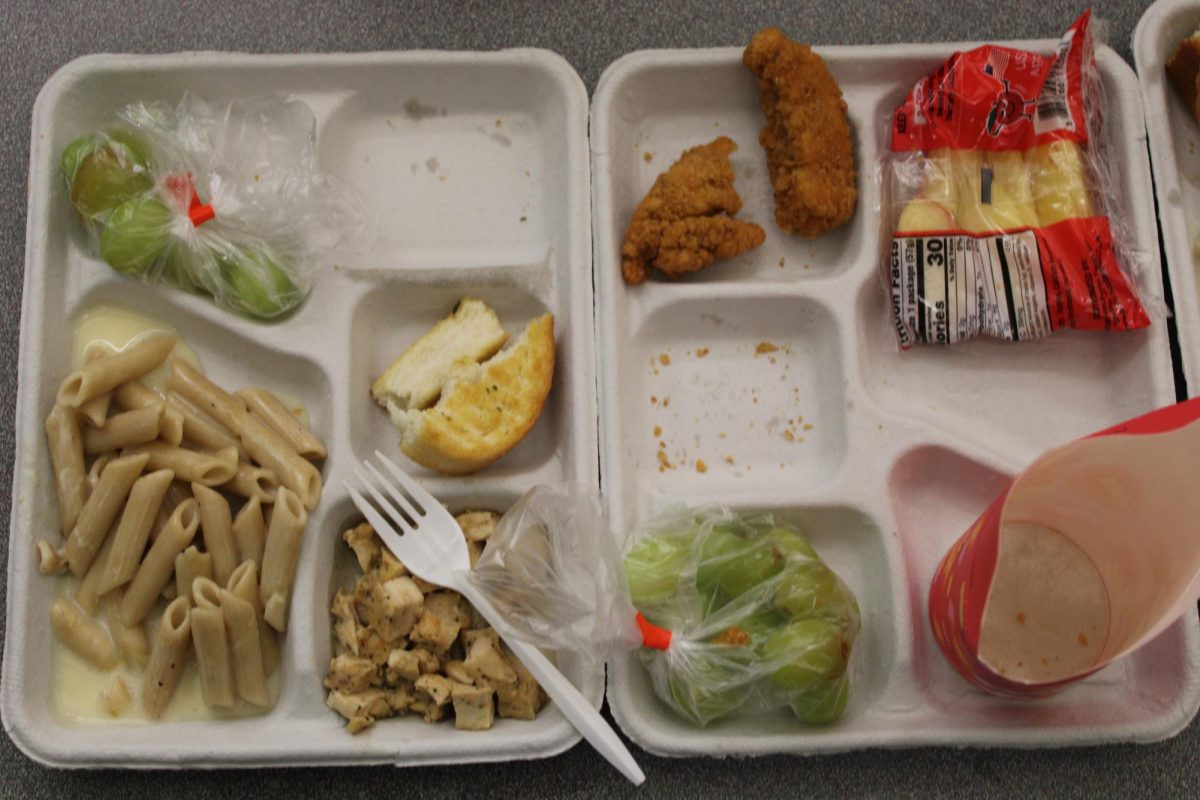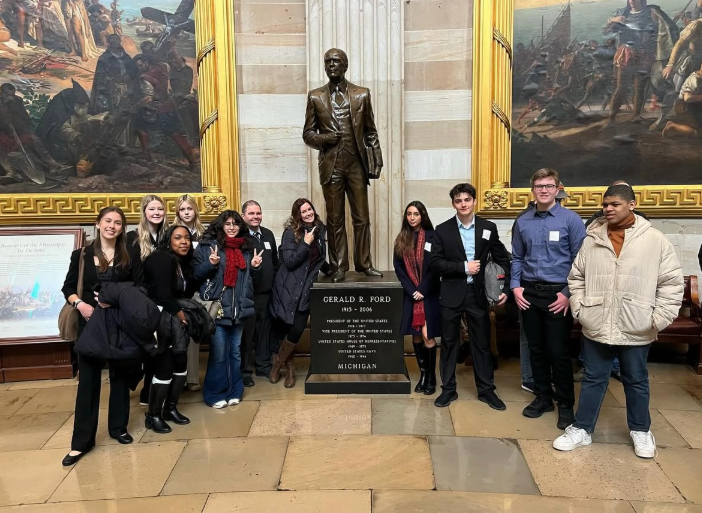For many Americans, owning a car was more than a convenience, it was a necessity. But with new tariffs put into place and trade becoming more difficult, consumers felt the impacts far beyond the factory, right in their driveways.
On April 3, 2025, President Donald Trump began introducing his tariffs with the stated hope of encouraging more companies to manufacture in the United States, according to the BBC article “What tariffs has Trump announced and why?” by Jennifer Clarke. Since the announcement, many people have had theories as to what the tariffs could have meant to the cost of cars. These tariffs created by the Trump administration were meant to bring jobs and boost American-made products, but the actual impact was more complicated.
Mark Naszradi, dealership manager at Hines Park Lincoln in Plymouth, Michigan, has concerns about how the tariffs will impact car sales. “The manufacturer would likely have taken any potential tariff increase by spreading the cost across all vehicle models, since the Lincoln Nautilus was made in China,” Naszradi said. “That way you had minimal price increases overall, instead of a substantial increase on one car.”
Naszradi said if the Lincoln Nautilus was manufactured outside of the United States, it would have gotten hit by tariffs greater than if just individual parts were getting sent in. He thinks that the companies will take the tariff increase from the one car manufactured outside the United States, and raise the prices of all their vehicles to make up for that one car’s price.
Car prices skyrocketed during the COVID-19 pandemic; the market had mostly stabilized since then. “Prices from after COVID to now had been pretty much a flat line,” Naszradi, a dealership manager since 1994, said.
Naszradi expects tariffs to have a steady increase on prices rather than another price spike, even though it is uncertain what will happen with how recently the tariffs are being implemented.
According to CNN, Jim Farley, CEO of Ford Motor Company, states that competitors like General Motors and Stellantis have still not decided if they will relocate factories to the United States or pass the tariff cost onto customers.
Conner Vu, a senior at Canton High School, said he has considered whether tariffs impacted the cost as he purchased his new car on April 5, 2025. “I spent right around 30 grand,” Vu said.
While he believed the higher price was a little impacted because he was a young customer, the dealership didn’t mention tariffs during negotiations, and he wasn’t yet convinced tariffs had made an impact yet. Vu’s advice to car buyers is to “look at used cars, and wait for the car market prices to go down because the tariffs were definitely going to make everything higher.”
Chad Woodring, automotive teacher at Canton High School, has seen the impact from a different angle. Woodring said, “car prices had, at least for new cars, remained relatively stable, even through the supply shortage.”
And as tariffs continued to roll in, Woodring has not noticed any changes in students willing to bring their cars into the shop to be fixed. “If anything, we had more of a desire to get the work done here because it was more cost effective,” Woodring said. “It was cheaper for people to bring their cars [into the P-CEP auto shop] and have students work here than to take it to a shop, because of the way we did our pricing [charging just for parts and a minimal amount for labor].”
Riley Shepherd, an economics teacher at Plymouth High School, added another view of the financial troubles. “It was almost universally agreed upon by economists that by increasing tariffs, it got passed on to the consumer,” Shepherd said. “Corporations didn’t just take these price increases and they went, ‘Oh, guess we can’t make as much profit.’”
Shepherd also pointed out how investors responded when tariffs were announced. “When these tariffs were announced, Ford stock dropped.” That drop could have led to the company needing to raise prices even further to make up the money lost by investors, she explained.
While President Trump’s goal was to bring jobs and factories back to the U.S., doing so is not always that simple. “We had found different parts of the world where manufacturing [cars] made sense based on their existing infrastructure, like the factories they currently had, or the resources they had naturally available to them, or even their workforce,” Shepherd said. “Why change the location of somewhere that manufactured parts for us, when we could keep it there for the greatest efficiency and cost effectiveness?”
Although it was still too early to fully measure the effects of the tariffs introduced in April 2025, economists generally agree tariffs tended to raise production costs. When costs go up for manufacturers, those costs are often passed on to consumers in the form of higher prices.
While some industries may benefit from increased domestic production, others, like auto manufacturing, could face challenges due to global supply chain dependencies. Whether car prices rise drastically or remain steady depends on how companies adjust their supply chains and how long the tariffs stay in place. The long-term impact on consumers will become clearer in the months or years ahead.








